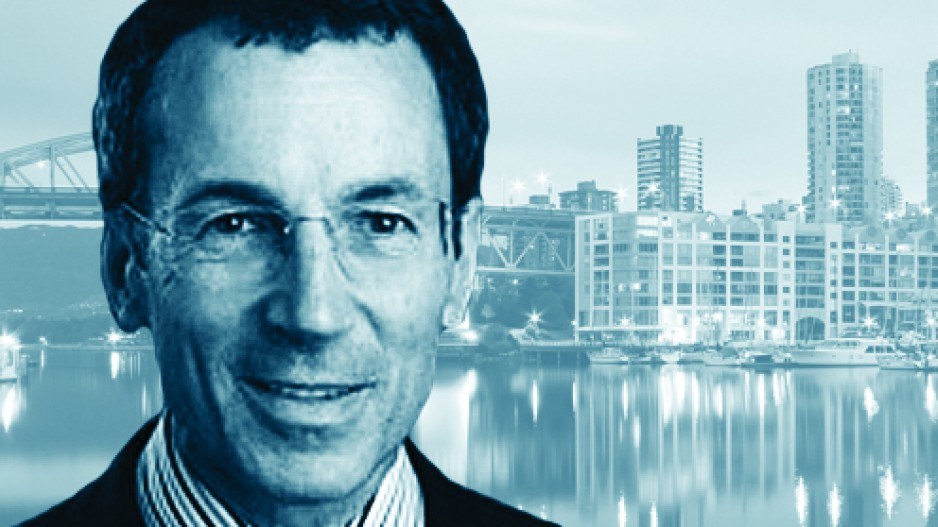Notwithstanding its boost to the Tsawwassen First Nation economic development and the retail landscape, this mall is a travesty of common-sense planning
The last few weeks have been punctuated by three transportation developments that lead to one question: has the Metro 2040 regional growth strategy been fatally crushed by oncoming traffic?
The plan, to refresh the memories of non policy wonks, calls for “compact, vibrant communities connected by an efficient transit network, an effective goods movement system and affordable infrastructure.” It’s based on a wide range of concerns: clean air, economic health, protection of farmland and green space, affordability, shorter commutes, healthy active lifestyles, reduced greenhouse gas emissions and more. It’s been approved by all the region’s municipalities and the provincial government. It’s where we want to go. You’d think.
But that’s definitely not where we’re going. The grotesque three levels of overpasses and massive interchange for the Steveston Highway area just made public, part of the 10-lane George Massey Tunnel Replacement Project, went so far in the opposite direction they left Richmond Mayor Malcolm Brodie “literally breathless.”
Then came the official opening of the 1.2-million-square-foot Tsawwassen Mills shopping mall, a rural sea-level destination on Class 1 farmland on a flood plain, about as far away from “compact vibrant communities connected by an efficient transit network” as you can get. The first results? A massive traffic gridlock jam on the opening weekend, near-impossible employee commutes and immediate pressure to further expand the nearby public highways. Notwithstanding its boost to the Tsawwassen First Nation economic development and the retail landscape, this mall is a travesty of common-sense planning.
The third development, gamely struggling against these massive flows of traffic, was the launch of public consultation on funding for the first phase of the Mayors’ Council’s 10-Year Vision for Transit and Transportation. If the mayors approve the proposed new regional funding options being put forward to match federal and provincial commitments, the new year will see the first improvements in bus service in the region since 2009. You can weigh in with your opinions online at http://tenyearvision.translink.ca/have-your-say/ until October 30.
So where is all this taking us?
In spite of the likely approval of the new transit funding, the answer is “backwards.” Metro Vancouver chairman Greg Moore gave a succinct description of “wrong direction” when he explained the Metro Van board’s near-unanimous opposition to the 10-lane bridge that will replace the George Massey Tunnel. Based on the Metro 2040 regional plan and the mayors’ 10-Year Vision, both approved by the province, every new project should meet two primary goals, Moore told Global TV in June: “How is this piece of infrastructure going to shift the mode from single-occupancy vehicles [SOV] into transit and active transportation, not into making it easier and more convenient to have urban sprawl in the future? The second thing [is]: does that shorten the number of kilometres that someone needs to drive in a single-occupancy vehicle? This bridge does the opposite.”
The justifications for the bridge have a Trump-like ring: instinctive gut appeal to frustrated SOV drivers, but making zero sense to anyone who knows how traffic congestion is really solved. The transportation minister’s claim that a big new bridge will reduce emissions from idling cars unbelievably ignores the massive increase in emissions from the new traffic that will inevitably rush in to fill a 10-lane bridge. The bridge is a desperation move to make the SOV great again, orchestrated by the same traffic engineers who keep making up claims about projected traffic increases on the money-bleeding $3.5 billion Port Mann Bridge that have never come to pass.
No one is suggesting the maddening congestion on Highway 99 doesn’t need fixing. Just not this fix. Nor is it reasonable to expect a future without cars, but we can’t afford the 25% efficiency of SOV traffic.
Projects like Tsawwassen Mills and the new 10-lane bridge are cementing Metro Vancouver into a heavily subsidized SOV-dependent future, in spite of overwhelming evidence that this will come at a huge cost to the social, economic and ecological health of the region. •
Peter Ladner ([email protected]) is a co-founder of Business in Vancouver. He is a former Vancouver city councillor and former fellow at the SFU Centre for Dialogue. He is the author of The Urban Food Revolution




